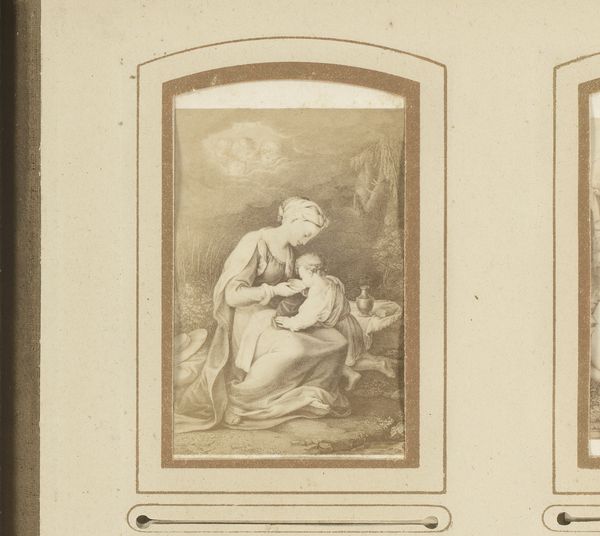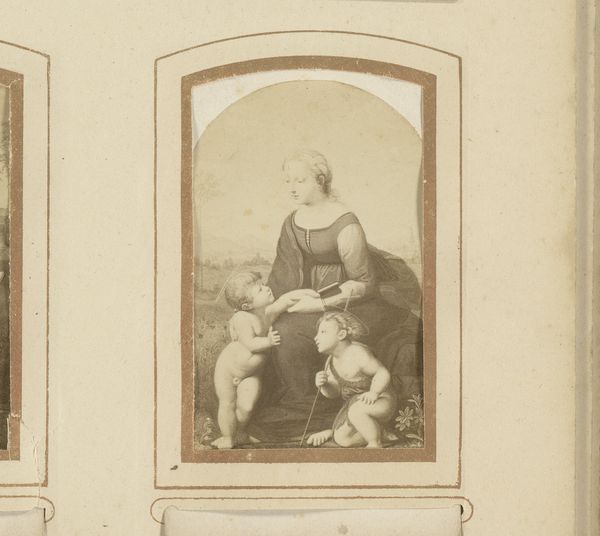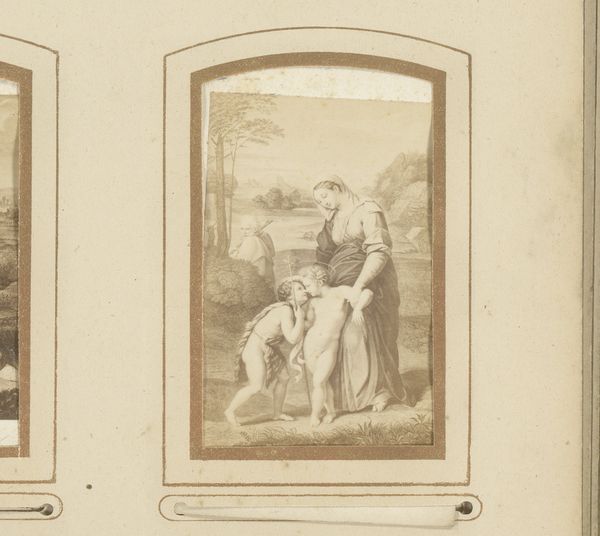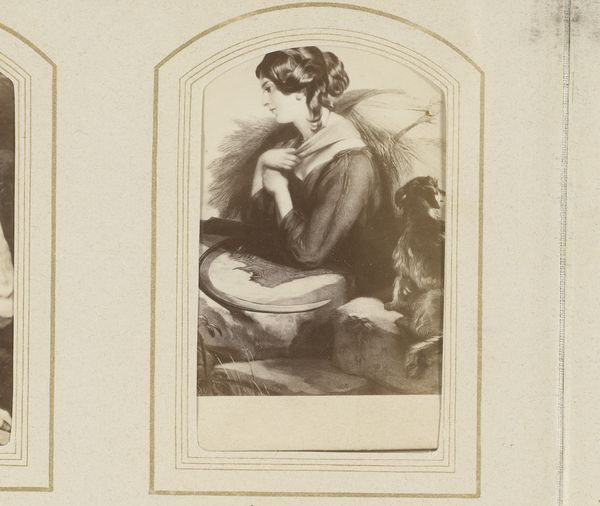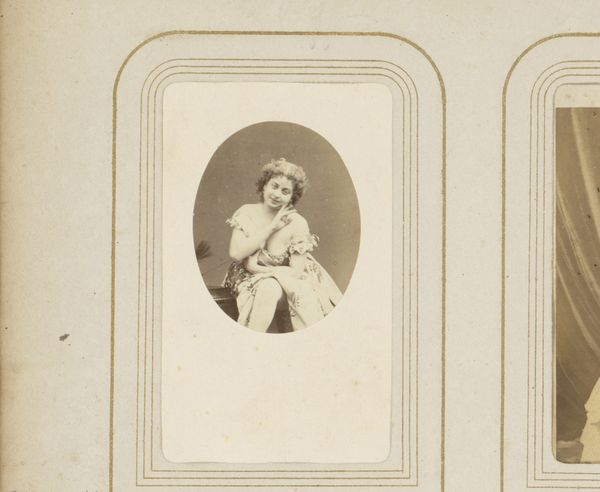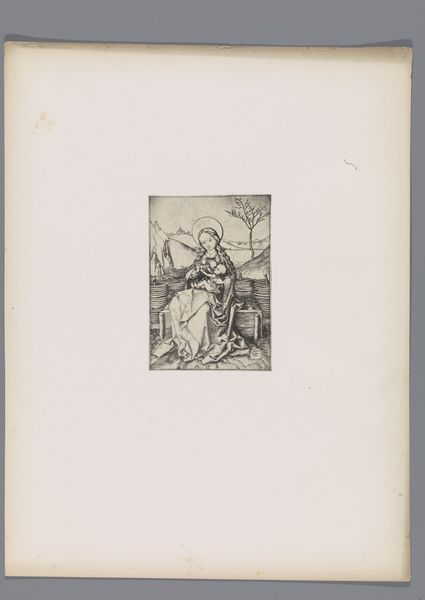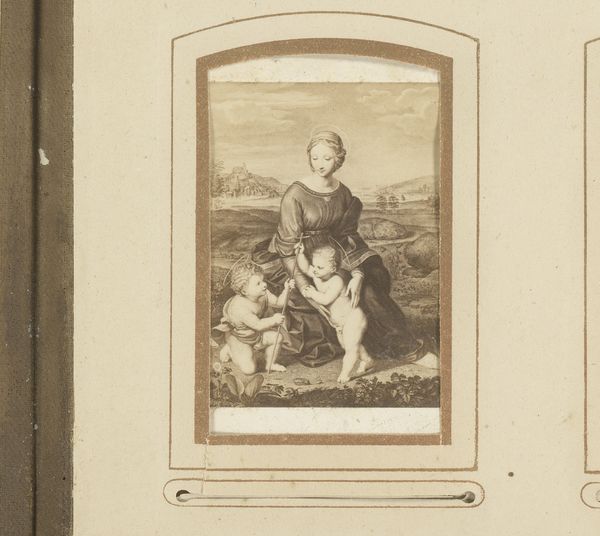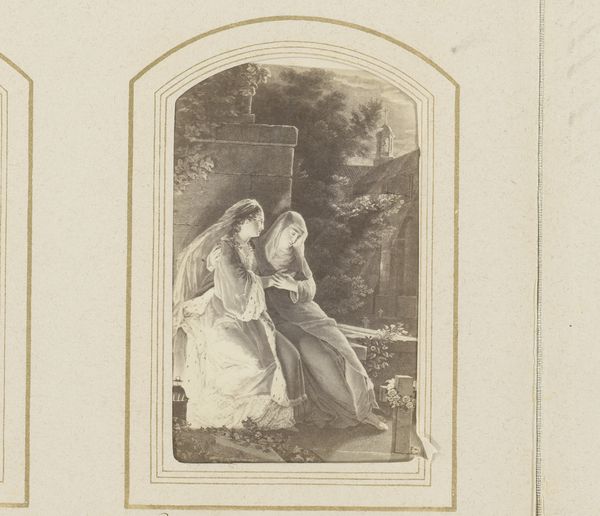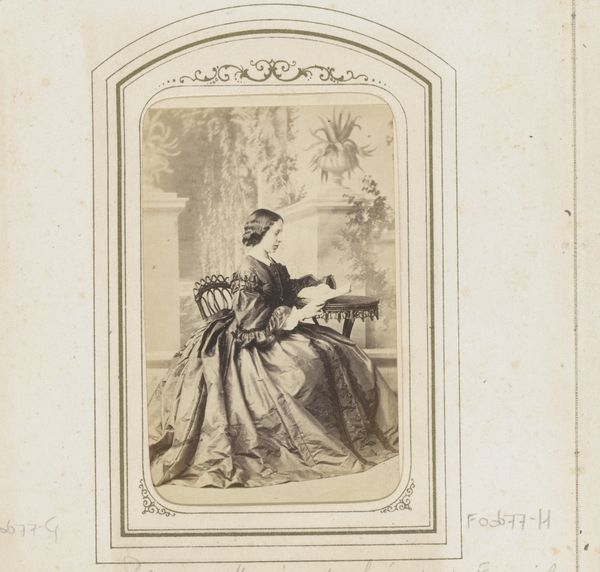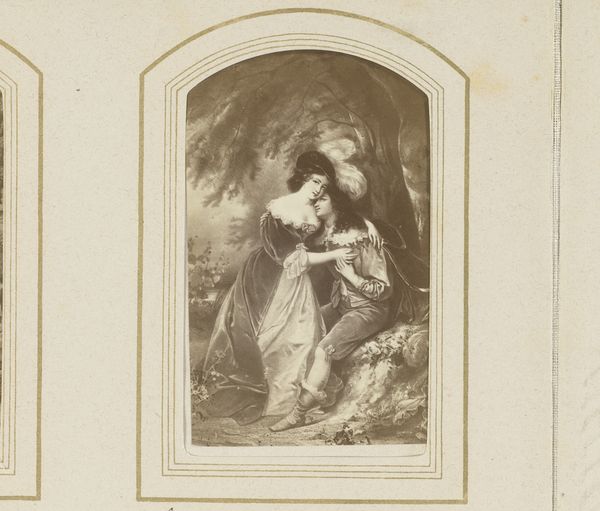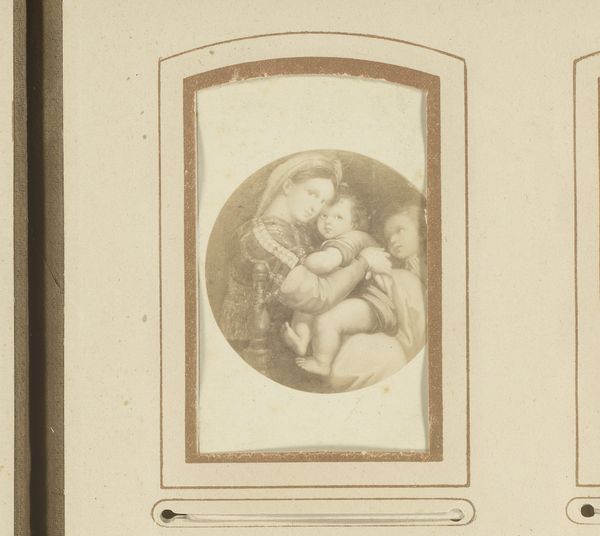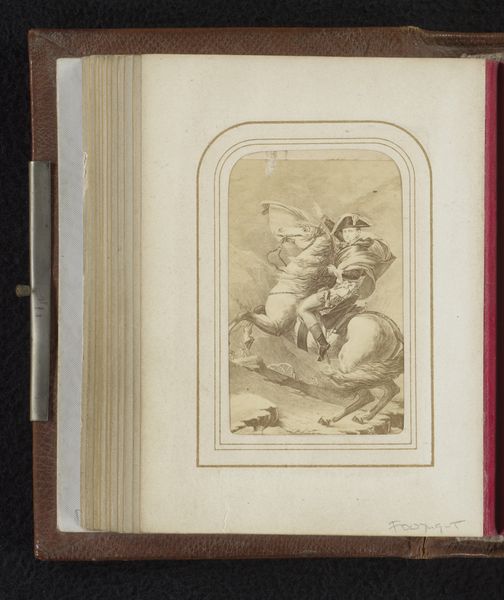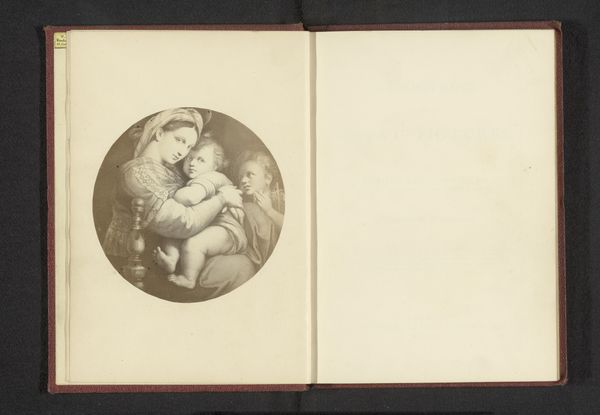
Fotoreproductie van Madonna del Lago door Leonardo da Vinci 1850 - 1900
0:00
0:00
fratellialinari
Rijksmuseum
print, photography
#
portrait
#
aged paper
#
toned paper
#
antique
# print
#
figuration
#
photography
#
underpainting
#
19th century
#
warm-toned
#
genre-painting
#
italian-renaissance
#
historical font
Dimensions: height 81 mm, width 50 mm
Copyright: Rijks Museum: Open Domain
Curator: This print, housed here at the Rijksmuseum, is titled "Fotoreproductie van Madonna del Lago door Leonardo da Vinci," dating from between 1850 and 1900. Editor: Immediately, I’m struck by its aged quality. The sepia tone lends it a kind of quiet dignity; almost like a faded memory. The warmth really highlights the Renaissance underpainting. Curator: Yes, the toned paper contributes to the feeling of antiquity. The composition adheres quite rigorously to established Renaissance tropes. Notice the pyramidal arrangement of figures, creating a sense of balance and harmony, principles revered in that period. Editor: Speaking of materials, I'm curious about this "fotoreproductie," a photographic reproduction. How did that interplay with the existing printmaking technologies of the mid to late 19th century impact artistic practices? Did this reproduceability threaten artisans' traditional skills? Curator: An insightful question. Indeed, photography democratized art dissemination. Consider how printmaking, originally a laborious handcraft, became mechanized and increasingly photomechanical. This altered the perception of the artwork as a unique object, changing consumption patterns. Editor: Absolutely. What's particularly fascinating is seeing a reproduced copy of a work that already embodied reproduction. In this case, we're observing not just artistic output, but the industry of art production itself, made visible through photography. Curator: Precisely, one sees it as a representation that undergoes a further distancing through photographic representation. Note, for instance, how this distance might invite a unique reading, independent of traditional interpretations. This reproductive chain alters how we view Madonna as it invites a whole new network of meaning. Editor: So, a print reproducing a painting allows a broader engagement but potentially dilutes the original intention while shifting the materiality in both creation and dissemination. It almost feels cyclical. Curator: It indeed underscores the layering of meanings, while, photographically speaking, inviting interpretations centered around time and medium itself. Editor: Reflecting on this reproductive layering allows to read history, culture and material production, giving it new life, even while considering its intrinsic artistic values. Curator: And by applying semiotics, the codes and symbols become enriched through that exchange as viewers now engage a more complex form than its Italian Renaissance original.
Comments
No comments
Be the first to comment and join the conversation on the ultimate creative platform.
